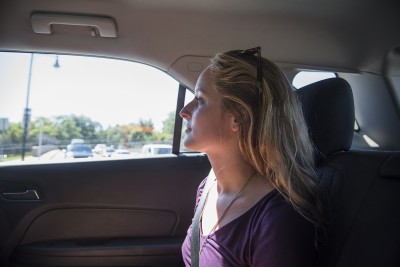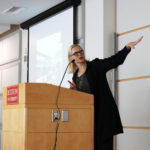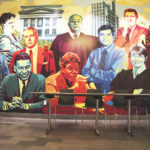
College students around Greater Boston, as of this month, can travel inside designated college areas for a flat rate of $2 using Uber’s ride-hailing option uberPOOL, according to a Friday press release.
Students are eligible for the uberPOOL flat rate by sharing the ride with another passenger going in the same direction. Areas covered by the program are Kendall, Harvard and Davis squares, Fenway, Kenmore, Allston, Brighton and JFK, the release stated.
The program is the first of its kind among Uber’s U.S. operations, Uber spokesperson Carlie Waibel said, dubbing the Boston area as an “education hub.”
“This offers a very affordable and convenient way for students to get around their campuses as well as their neighboring community,” Waibel said. “Whether it’s going to and from a restaurant, going from class, going out in the evening, these are important things to make sure people do have that reliable transportation option.”
Students around Greater Boston welcomed the flat rate program, because of the clear economic cost and convenience.
Anthony Zhao, a sophomore at Boston College, said he does not use Uber to travel across his campus, but the flat rate program would be beneficial if it was expanded to include downtown Boston.
“That’ll make trips so much cheaper,” he said. “I’d probably use it a lot more.”
Though Massachusetts Institute of Technology junior Kyle Pina regularly uses his car to commute, riding Uber can be a practical option when finding parking space, he said.
“If you know it’s going to be $2, for college students, it’s not a bad idea at all,” he said. “I definitely think it’s easier to use.”
Uber, launched in San Francisco in March 2009, faces increasing competition with other companies that provide similar ride-hailing services.
Lyft, for instance, offers Lyft Line, an option similar to uberPOOL.
“We’re always looking at ways to make rides more affordable and efficient,” said Lyft spokesperson Timothy Rathschmidt said.
Fasten, another ride-hailing company that operates in Boston and Austin, also serves as a price competitor for Uber. Though it currently does not have shared-ride options like Uber and Lyft, Fasten’s “rates are the lowest in town,” said Fasten co-founder and COO Vlad Christoff.
“The more, the merrier,” Christoff said, referring to the increasing competition among ride-hailing services. “The more companies out there, the better it is for drivers and riders because we compete for both drivers and riders.”
Christoff said Fasten has a “Boost” option, which allows riders to bid a higher fare in times of high traffic; unlike Uber and Lyft, Fasten does not automatically implement surge pricing during high-demand hours.
Despite their growing prominence, ride-hailing services have been entangled in sexual assault cases.
Alejandro Curiel, a freshman at Northeastern University, said he does not feel comfortable using ride-hailing services due to safety concerns.
“I don’t sometimes feel that safe,” he said. “I don’t know how the drivers are hired. Anyone can do it.”
Yet for others, Uber serves as an alternative to public transportation during the night. Hannah Davies, a sophomore at Suffolk University, said she finds Uber convenient at night.
“I would feel safer taking an Uber after dark than taking the T because … it brings you to and from exact locations instead of having to find your way from the stations,” she said. “I have never had any issues with Uber. Granted I have never taken an Uber by myself, I’m usually with a group of friends.”
Waibel, the Uber spokesperson, said Uber provides riders with various data to ensure safety, such as the driver’s photo, license plate number and a GPS tracking system that can be shared with the rider’s acquaintances.
“Safety is absolutely a priority for us at Uber — for riders and our driver partners,” she said. “All drivers right now have to go through a background screening process that is done through a third-party background check vendor.”




